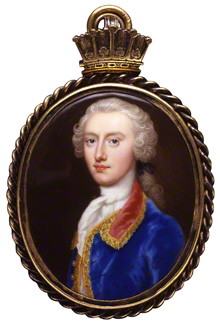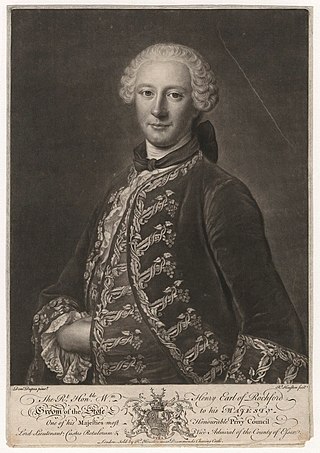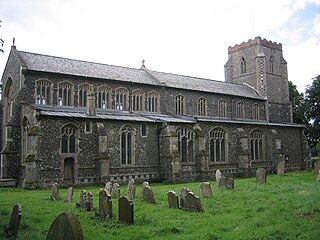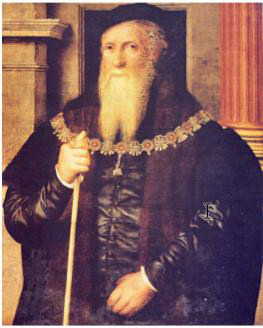Related Research Articles

Duke of Norfolk is a title in the peerage of England, and is the premier non-royal peerage. The seat of the Duke of Norfolk is Arundel Castle in Sussex, although the title refers to the county of Norfolk. The current duke is Edward Fitzalan-Howard, 18th Duke of Norfolk. The dukes have historically been Catholic, a state of affairs known as recusancy in England.

William Henry Nassau de Zuylestein, 4th Earl of Rochford, KG, PC was a British courtier, diplomat and statesman of Anglo-Dutch descent. He occupied senior ambassadorial posts at Madrid and Paris, and served as Secretary of State in both the Northern and Southern Departments. He is credited with the earliest-known introduction of the Lombardy poplar to England in 1754.

John de la Pole, 2nd Duke of Suffolk, KG, was a major magnate in 15th-century England. He was the son of William de la Pole, 1st Duke of Suffolk, and Alice Chaucer, the daughter of Thomas Chaucer. His youth was blighted, in 1450, by the political fall and subsequent murder of his father, who had been a favourite of king Henry VI but was increasingly distrusted by the rest of the nobility. Although the first duke of Suffolk had made himself rich through trade and – particularly – royal grants, this source of income dried up on his death, so John de la Pole was among the poorest of English dukes on his accession to the title in 1463. This was a circumstance which John felt acutely; on more than one occasion, he refused to come to London due to his impoverishment being such that he could not afford the costs of maintaining a retinue.

Katherine Brandon, Duchess of Suffolk, suo jure12th Baroness Willoughby de Eresby, was an English noblewoman living at the courts of King Henry VIII, King Edward VI and Queen Elizabeth I. She was the fourth wife of Charles Brandon, 1st Duke of Suffolk, who acted as her legal guardian during his third marriage to Henry VIII's sister Mary. Her second husband was Richard Bertie, a member of her household. Following Charles Brandon's death in 1545, it was rumoured that King Henry had considered marrying Katherine as his seventh wife, while he was still married to his sixth wife, Catherine Parr, who was Katherine's close friend.

Aldringham cum Thorpe is a civil parish in the East Suffolk district of Suffolk, England. Located south of the town of Leiston, the parish includes the villages of Aldringham and Thorpeness, which is on the coast, between Sizewell (north) and Aldeburgh (south). In 2007 it had an estimated population of 700, rising to 759 at the 2011 Census.

Earl of Rochford was a title in the Peerage of England. It was created in 1695 and became extinct in 1830.

Aldringham is a village in the Blything Hundred of Suffolk, England. The village is located 1 mile south of Leiston and 3 miles northwest of Aldeburgh close to the North Sea coast. The parish includes the coastal village of Thorpeness. The mid-2005 population estimate for Aldringham cum Thorpe parish was 730.

Wingfield is a village in the English county of Suffolk. It is found 7 miles (11 km) east of Diss, signposted off B1118, near Eye.
John Hastings, 1st Baron Hastings, was an English landowner, soldier and administrator who was one of the Competitors for the Crown of Scotland in 1290 and signed and sealed the Barons' Letter of 1301. He was Lord of the Manor of Hunningham.

Wingfield Castle in the parish of Wingfield in Suffolk, England is a fortified manor house which was the ancestral home of the Wingfield family and their heirs, the de la Pole family, created Earls and Dukes of Suffolk. It is now a private house. Sir John de Wingfield, of Wingfield, chief administrator to Edward the Black Prince (1330–1376), was the last male of his line, whose daughter and heiress Catherine Wingfield married Michael de la Pole, seated at Wingfield Castle, who in 1385 was created Earl of Suffolk. His descendant Edmund de la Pole, 3rd Duke of Suffolk (1472–1513) was forced to surrender his dukedom in 1493. It was resurrected by King Henry VIII in 1514 for his favourite Charles Brandon, 1st Duke of Suffolk (1484–1545), who although he had no close connection with Wingfield Castle and the county of Suffolk, was a great-grandson of Sir Robert Wingfield, of Letheringham in Suffolk, about 12 miles south of Wingfield.

Frederick of Nassau, Lord of Zuylestein (1624–1672) was an illegitimate son of Frederick Henry, Prince of Orange, by Margaretha Catharina Bruyns,
Sir Humphrey Wingfield was an English lawyer and Speaker of the House of Commons of England between 1533 and 1536.
William Hendrik of Nassau, Lord of Zuylestein, 1st Earl of Rochford was a Dutch soldier and diplomat in the service of his cousin William III of England. During the reign of James II of England he travelled to England to liaise with William's English supporters, and played an important part in the preparations of the Glorious Revolution.

William Nassau de Zuylestein, 2nd Earl of Rochford, styled Viscount Tunbridge from 1695 to 1709, was a British Army officer and Whig politician who sat in the Irish House of Commons from 1705 and in the British House of Commons from 1708 until 1709 when he succeeded to the peerage and sat in the House of Lords. He was killed in battle.

Sir Anthony Wingfield KG, MP, of Letheringham, Suffolk, was an English soldier, politician, courtier and member of parliament. He was the Lord Lieutenant of Suffolk from 1551 to 1552, and Vice-Chamberlain of the Household in the reign of Edward VI.

Richard Savage Nassau was an English Member of Parliament who served from 1747 to 1780, with a 20-year gap between 1754 and 1774.
Sir Henry Wroth, second son of Henry, Sir Robert Wroth's youngest son, acquired some fame as a royalist during the civil wars, was a 'pensioner' of Charles I, and was knighted at Oxford on 15 September 1645. He compounded with the parliament for £60. He was granted land in Ireland and succeeded to Durrants, an estate at Enfield in Middlesex, on the death of his uncle John. He was commissioned captain of a troop in the Royal Horse Guards in 1661.
Sir John Russell, of Strensham in Worcestershire where he held the manor and advowson, was an English landowner, soldier, administrator, courtier and politician.

Anne Hamilton, Duchess of Hamilton formerly Anne Spencer, was the third wife of James Hamilton, 5th Duke of Hamilton.
Savage is an Anglo-Norman surname which was used by several English and Anglo-Irish knightly or gentry families, several of whom were politically important in England or Ireland.
References
- ↑ "Suffolk A-B". The Domesday Book Online. Retrieved 13 July 2021.
- ↑ The Domesday Book, England's Heritage Then and Now, by Thomas Hinde, Greenwich Editions, 2002.
- ↑ The Manors of Suffolk notes on their History and Devolution The Hundreds of Thingow, Theedling, Wangford and Wilford. By W.A. Coppinger. M.A. LLD FSA FRSA of the Middle Temple, Barrister at Law. Professor and Dean of the Faculty of Law in the Victoria University of Manchester, sometime President of the Bibliographical Society, Author of County of Suffolk; It History as Disclosed by Existing Records. Volume 7, Taylor Garnett & Evans & Co. Ltd Manchester 1911.
- ↑ Kellys Directory of Suffolk.
- 1 2 Conveyance dated 14 September 1920 between the Most Honourable Mary Louise Graham (commonly called the Marchioness of Graham, and thereinafter called "the Marchioness") the wife of the Most Honourable James Graham (commonly called the Marquess of Graham and thereinafter called "the Marquess") of the first part the marquess the marchioness Colonel Donald W Walter Cameron of Lochiel of Achnacarry Spean Bridge in the county of Inverness and George Francis Dalziel of Edinburgh Writer to the Signet (hereinafter collectively called "the Trustees") of the second part Harry Urban Capon of Kenton Hall in the county of Suffolk Farmer of the third part and Adolphus George Maskell of Chelmsford in the county of Essex Solicitor (thereinafter called the purchaser) of the fourth part.
- 1 2 Conveyance dated 9 January 1934 between Adolphus George Maskell of Chelmsford in the county of Essex Solicitor (hereinafter called the vendor) of the one part and Adnams and Company Limited whose registered office is situate at Sole Bay Brewery Southwold in the county of Suffolk (hereinafter called the purchasers) of the other part.
- 1 2 Conveyance dated 14 February 2003 between Adnams PLC whose registered office is situate at Sole Bay Brewery East Green Southwold IP18 6JW (hereinafter called "the vendor") of the one part and Richard Glasgow of Leadenham in the county of Lincolnshire (hereinafter called "the purchaser") of the other part.